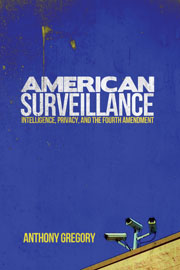The U.S. government spends $33 billion annually on the War on Drugs. Yet, the Drug War has not reduced drug use, crime, or poverty as its proponents claim. In fact, the criminalization of drugs has spawned a crime wave in this country similar to the days of Prohibition.
Before Congress passed the National Prohibition Act in 1919, homicide rates in America were relatively low. In the 1910s, about 5 in 100,000 Americans fell victim to murder. At the height of Prohibition, the murder rate climbed nearly 60%. But after the 21st Amendment repealed Prohibition sixteen years later, the rate steadily declined back to pre-Prohibition levels. The War on Drugs, from the 1960s to the present, brought the homicide rate back up to about 10 per 100,000—almost twice the rate before Prohibition and the Drug War.
In fact, the more the government spends on the Drug War, the more violent crime increases. Eliminating drug prohibition could reduce the homicide rate in the U.S. by 25 to 75 percent, according to economist Jeffrey A. Miron. In his research for Drug War Crimes: The Consequences of Prohibition, Dr. Miron found that homicide rates and drug-law enforcement move in tandem in a variety of ways. As the Drug War intensifies, the black market in drugs becomes more profitable, and those willing to risk prosecution and heavy prison time often become more willing to flout the law in other ways. Gang warfare becomes the norm, just as it did with alcohol prohibition, and innocent bystanders fall victim to the crossfire spawned by the drug laws. Dealers in the illegal drug trade have no non-violent recourse in the courts or through legal arbitration to resolve disputes, and arguments over drug transactions or other matters fuel violent score settling within the illicit drug market.
Drug dealers and occasional bystanders are not the only casualties of drug prohibition. Another result is that the police and law enforcement resources are diverted from combating non-drug-related crimes, giving criminals more freedom to terrorize communities. In some cases, police officers themselves have become corrupted by the huge cash flows available to them if they agree to look the other way or even assist in organized crime.
The millions of dollars spent on drug law enforcement have had no proven substantial effect in reducing drug abuse. Drugs are not more difficult to acquire. According to Miron’s research, the price of cocaine, adjusting for inflation and purity, fell in real dollars from $450 per pure gram in 1981 to about $100 by 1996.
As much as drug laws increase the risks facing drug dealers, they barely deter users. Although more than 1.2 million Americans are arrested for possession each year, there are still an estimated 28 million users.
America’s War on Drugs has spawned massive corruption, violent crime, and the destruction of constitutional liberties. Half a million Americans are locked up for nonviolent drug crimes, often under federal mandatory minimums that often put them behind bars for longer prison terms than rapists and armed robbers. This is a major cause of the overcrowded prisons in the United States, which now has the highest per capita prison population in the world.
America’s Drug War has become an expensive subsidy for violent crime; very few political reforms would do more to reduce violent crime in America than ending it, once and for all.








